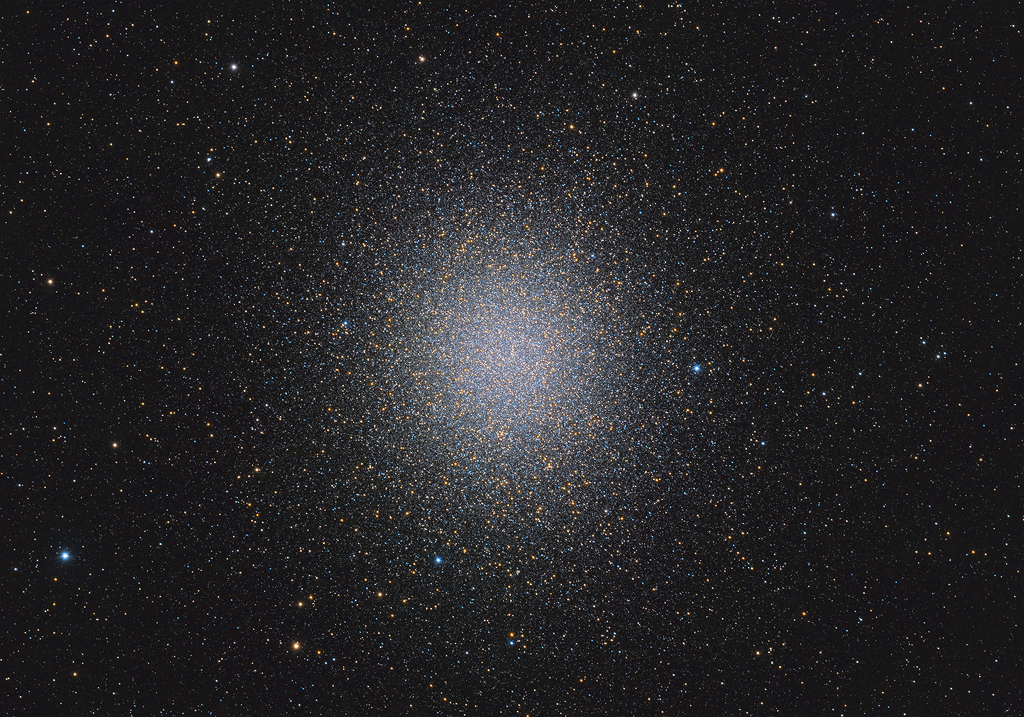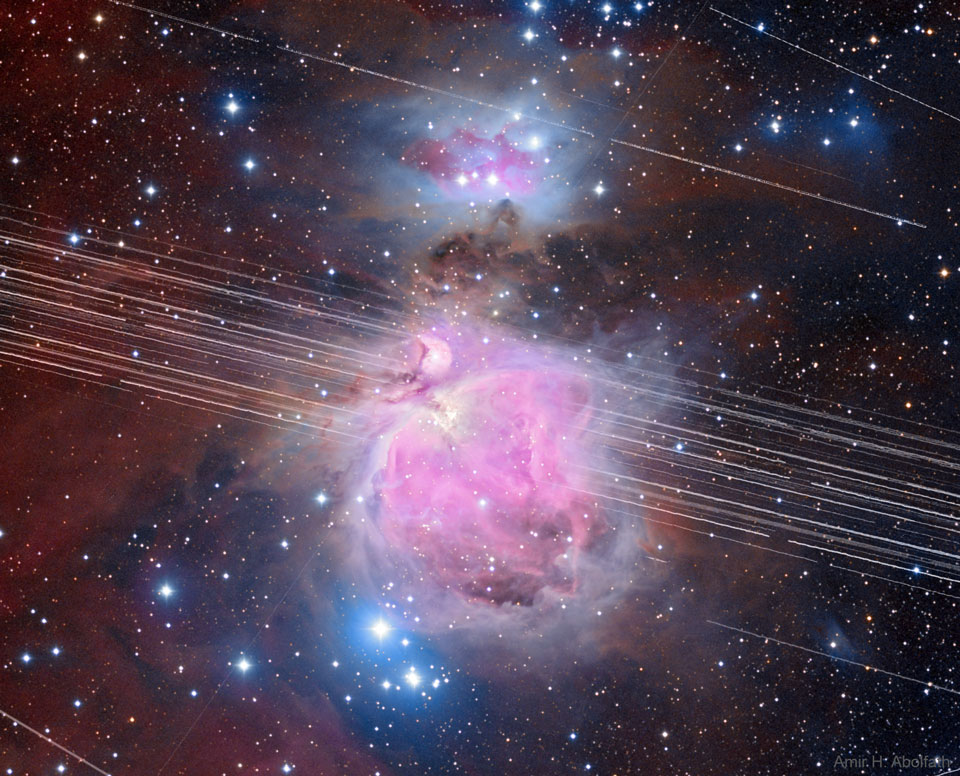Nombre total de pages vues
05/06/2021
04/06/2021
TELEPORTATION - Des physiciens réalisent une téléportation quantique entre deux puces informatiques
03/06/2021
ASTRONOMY - Millions of Stars in Omega Centauri
2021 June 3
Image Credit & Copyright: Ignacio Diaz Bobillo
Explanation: Globular star cluster Omega Centauri, also known as NGC 5139, is some 15,000 light-years away. The cluster is packed with about 10 million stars much older than the Sun within a volume about 150 light-years in diameter. It's the largest and brightest of 200 or so known globular clusters that roam the halo of our Milky Way galaxy. Though most star clusters consist of stars with the same age and composition, the enigmatic Omega Cen exhibits the presence of different stellar populations with a spread of ages and chemical abundances. In fact, Omega Cen may be the remnant core of a small galaxy merging with the Milky Way. Omega Centauri's red giant stars (with a yellowish hue) are easy to pick out in this sharp, color telescopic view.
NUCLEAIRE - Le soleil artificiel chinois
GEOLOGIE - Un énorme gouffre s'est ouvert et grandit au Mexique...
02/06/2021
01/06/2021
ASTRONOMY - Starlink over Orion
2021 June 1
Image Credit: Amir H. Abolfath
Explanation: What are those streaks across Orion? Most are reflections of sunlight from numerous Earth-orbiting Starlink satellites. Appearing by eye as a series of successive points floating across a twilight sky, the increasing number of SpaceX Starlink communication satellites are causing concern among many astronomers. On the positive side, Starlink and similar constellations make the post-sunset sky more dynamic, satellite-based global communications faster, and help provide digital services to currently underserved rural areas. On the negative side, though, these low Earth-orbit satellites make some deep astronomical imaging programs more difficult, in particular observing programs that need images taken just after sunset and just before dawn. Planned future satellite arrays that function in higher orbits may impact investigations of the deep universe planned for large ground-based telescopes at any time during the night. The featured picture, taken in 2019 December, is a digital combination of over 65 3-minutes exposures, with some images taken to highlight the background Orion Nebula, while others to feature the passing satellites.
31/05/2021
I-PHONE ASTUCES - Secouez-moi...
ASTRONOMY - Mimas: Small Moon with a Big Crater
2021 May 31
Image Credit & Copyright: NASA, JPL-Caltech, Space Science Institute, Cassini
Explanation: Whatever hit Mimas nearly destroyed it. What remains is one of the largest impact craters on one of Saturn's smallest round moons. Analysis indicates that a slightly larger impact would have destroyed Mimas entirely. The huge crater, named Herschel after the 1789 discoverer of Mimas, Sir William Herschel, spans about 130 kilometers and is featured here. Mimas' low mass produces a surface gravity just strong enough to create a spherical body but weak enough to allow such relatively large surface features. Mimas is made of mostly water ice with a smattering of rock - so it is accurately described as a big dirty snowball. The featured image was taken during the closest-ever flyby of the robot spacecraft Cassini past Mimas in 2010 while in orbit around Saturn.
ASTRONOMY - Andromeda and Friends
2025 November 15 Andromeda and Friends Image Credit & Copyright : Piotr Czerski Explanation: This magnificent extragalactic skyscap...

-
2022 September 26 All the Water on Planet Earth Illustration Credit: Jack Cook, Adam Nieman, Woods Hole Oceanographic Institution ; Data ...
-
2025 May 11 The Surface of Venus from Venera 14 Image Credit: Soviet Planetary Exploration Program , Venera 14 ; Processing & Copyri...




